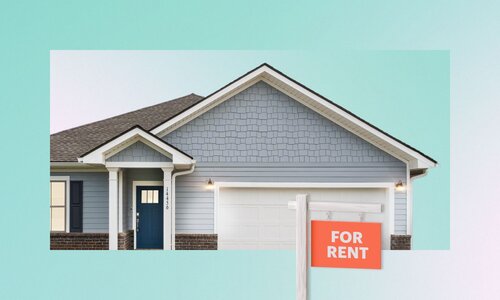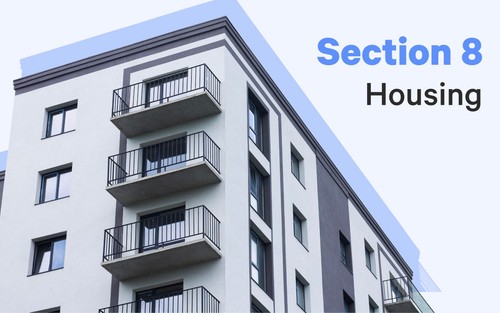Housing is a fundamental human right, but it’s not always distributed equally. Providing safe, quality housing is undoubtedly one challenge facing our society. The federal and local governments have developed affordable housing programs to address this need.
Let’s look at affordable housing and the different program options provided. We’ll also cover what real estate investors and property owners need to know about affordable housing programs.
What is affordable housing?
In the United States, affordable housing generally refers to dwelling units that cost no more than 30% of an area’s median household income as determined by the federal government, local government, or a recognized national affordability index. The definitions may or may not include maintenance costs in that 30% benchmark.
Affordable homes consist of apartments, duplexes, condominiums, or single-family homes. Depending on the context, “affordable housing” might refer to subsidized or public housing. In other cases, it could include naturally occurring affordable housing or any income-adjusted dwelling.
In the United States, many affordable housing programs are available, including public housing, Section 8, rent control, and Low Income Housing Tax Credit (LIHTC) properties.
Who needs affordable housing?
Many people who work in low-wage jobs, such as retail or food service, may not earn enough money to afford rent on a typical apartment or to save up to buy a home. Some families may have a high housing cost burden, meaning they spend more than 50% of their income on rent and utilities.
The cost of housing is a problem in high-demand markets like California and New York. In dense metros like San Francisco, where the median rent was $3,397 for 740 sq ft in July 2022, individuals can struggle to find a home within their budget.
Renters are not the only ones who need affordable housing; many seniors and people with disabilities live on fixed incomes. They can struggle to find affordable places to live with today’s high market rates, causing tough choices between essential health care and a place to live.
In short, affordable housing is essential for everyone. A stable, affordable place to live allows people to save money. Free from a high housing cost burden, their income can be used for other necessities or goals, such as buying medication, starting a small business, or paying for childcare.
Types of affordable housing programs
Many affordable housing programs are available to help people find safe, quality places to live. Some of these programs are run by the federal government, while state and municipal governments administer others. Nonprofit organizations also have housing assistance programs.
Public housing
Public housing programs are operated by state or local-level government agencies. Public housing units typically rent to lower-income households, senior citizens, and disabled persons. What public housing looks like varies across the nation, from single-family homes to high-rise apartments.
While state and local agencies own the housing, the Department of Housing and Urban Development (HUD) administers the program. If you qualify for a public housing unit, you don’t get a choice of where to live; the agency will assign a unit to you. Waitlists can be long.
The local public housing agency (PHA) sets eligibility criteria for public housing. It looks like factors like:
- U.S. citizenship or have eligible immigration status
- Annual gross income is 50-80% of the median income for the county or metro area
- Family size
- Qualification category (family, senior, disabled person)
The local PHA will want a residency history, income history, and an estimate of the next 12 months’ income. They may interview you or your family to see how you maintain your current home.
Housing Choice Voucher & Section 8
The Housing Choice Voucher Program, formerly Section 8, is a federal affordable housing program that provides rental housing payment assistance to low-income families, seniors, and people with disabilities. The program provides a subsidy that pays a portion of the monthly income for rent.
Section 8 voucher holders can choose to live in any rental unit that meets program requirements, including apartments, houses, duplexes, or condominiums. The vouchers pay some or all of the rent.
Eligibility for a Housing Choice Voucher is determined by the local public housing agency (PHA). Its factors are similar to public housing requirements. Additionally, the waitlist for this program can be extremely long or closed to new applications in some areas.
It’s best to contact the local PHA to learn all the eligibility and application requirements for the voucher program. Be aware that the PHA will likely:
- Check with your employer and bank to verify your income
- Require rental units to meet PHA-determined health and safety standards
- Inspect the rental unit before approving the voucher and approving you to sign the lease
Rent control
Rent control ordinances are a housing policy that stabilizes the amount landlords can charge for units. The city or state government determines how much a landlord can raise rent and how often they can do so.
Not all cities or states have rent control laws, and those that do have different rules. For example, some jurisdictions only have rent control for units built before a specific date, or unit residents must meet low-income requirements.
Rent increases may be limited to once per year and can only be raised by a specific percentage. Some laws also protect tenants from eviction without cause.
Low Income Housing Tax Credit (LIHTC)
The Low Income Housing Tax Credit (LIHTC) program is a federal tax incentive that encourages developers and property owners to build and operate affordable rental housing for low- and moderate-income households.
Like public housing, these units are assigned to qualified applicants. Approved individuals still pay rent but at a more affordable rate. Waitlist lengths vary in different areas.
Generally, you must make less than 60% of the area’s median income to qualify. Individual programs may have requirements based on your credit history, rental history, or criminal record.
Each year, the HUD publishes a database of LIHTC properties.
These are just a few housing assistance programs available; visit HUD’s website for more information on affordable housing programs.
Misconceptions about affordable housing
The U.S. Department of Housing and Urban Development (HUD) doesn’t own public housing properties. It provides affordable rental housing by funding building owners and programs that make low-income housing opportunities available.
Low-income residents want a safe place to live, much like all other families. Some people believe have affordable housing in their area leads to increases in crime, devaluation of the neighborhood, and reduced educational quality. Multiple researchers have found that high crime rates in areas with a density of public housing correlate more to the lack of opportunity accessible in those areas rather than the housing itself.
Studies on property value find that the preexisting land value in a given area is the determining factor in changes in property valuation. If it’s close to desirable infrastructure and adequately maintained, supply and demand will stabilize values.
Educational quality is improved when children have stable home and school systems. Not worrying if their family will be evicted or forced to move helps children feel safe and focus better in school.
Some oppose affordable housing because they believe the properties will be cheap and ugly. However, this is not always the case. Builders must adhere to the same building standards regardless of who their target market is. New housing developments can be designed to match the aesthetic of the neighborhood.
Providing stable, affordable housing for low-to-moderate-income families is one step toward home ownership.
How can I find affordable housing?
If you’re looking for affordable housing, there are a few different ways to search.
The first step is determining what type of affordable housing you’re interested in. Contact your local public housing authority if you want to live in public housing. If you’re interested in finding a place that accepts Section 8 vouchers, visit the HUD’s website for a list of participating landlords in your area.
Another way to search for affordable housing is to use an affordable housing locator tool. These tools allow you to search for affordable rental units by location, type of unit, and number of bedrooms.
You can also search for affordable housing developments that have received LIHTC financing or the HUD database specifically for LIHTC properties.
Benefits of affordable housing
When people have stable, affordable places to live, they are more likely to be involved in their community and less likely to experience homelessness or housing instability. It gives people the stability they need to lead successful lives, save money, and pay for other necessities.
Affordable housing also helps to create vibrant and livable communities. It can attract new businesses and residents, which leads to more jobs and economic growth. These community developments increase urban land use, helping to revitalize neighborhoods and spur economic development.
Real estate investors may be eligible for tax credits if a percentage of a property is used as affordable housing (for example, a given number of rental units in a multifamily building).
Low-income housing is also in high demand, so owning an affordable housing unit creates cash flow while buffering your portfolio from inflation and vacancy.
Challenges of affordable housing
Affordable housing is not without its challenges. One of the biggest challenges is the lack of available housing units. In many communities, there is simply not enough affordable housing to meet the needs of low- and moderate-income households.
Another challenge is that affordable housing developments can be located in areas that are not desirable, such as areas with high crime rates or poor schools. Zoning laws may restrict where these units can be built. This can make it difficult for people who live in affordable housing developments to find good jobs and affordable child care.
These developments can be challenging to finance and build. The Low Income Housing Tax Credit program is the most common source of financing for affordable housing developments, but it can take time to obtain these tax credits. Many of these housing developments often require a combination of public and private funding to build, which is challenging to secure.
Despite these challenges, affordable housing is vital in creating livable communities.
How can I invest in affordable housing?
Affordable housing is critical for ensuring everyone has a place to call home. If you’re interested in investing in affordable housing, there are several ways to do so.
One way is to purchase an affordable housing unit, such as a foreclosure or distressed property. This can be a good investment if you’re looking for stable income and the potential for appreciation.
Not only can your purchase qualify for the LITHC tax credit, but occupants might qualify for housing vouchers that reduce the risk of renting low-income housing. The key to rental profitability is to purchase wisely, factoring in any renovation and maintenance costs.
Another way to invest is to provide financing for affordable housing developments. This can be done through loans, real estate investment trusts (REITs), tax-exempt bonds, or other means like trusts focused on affordable housing.
Are you ready to invest in real estate?
When you’re ready to invest in real estate, browse Arrived Homes’ listings to see available properties. With our platform, you can easily buy shares of rental properties and receive a hassle-free portion of the rent and appreciation.







